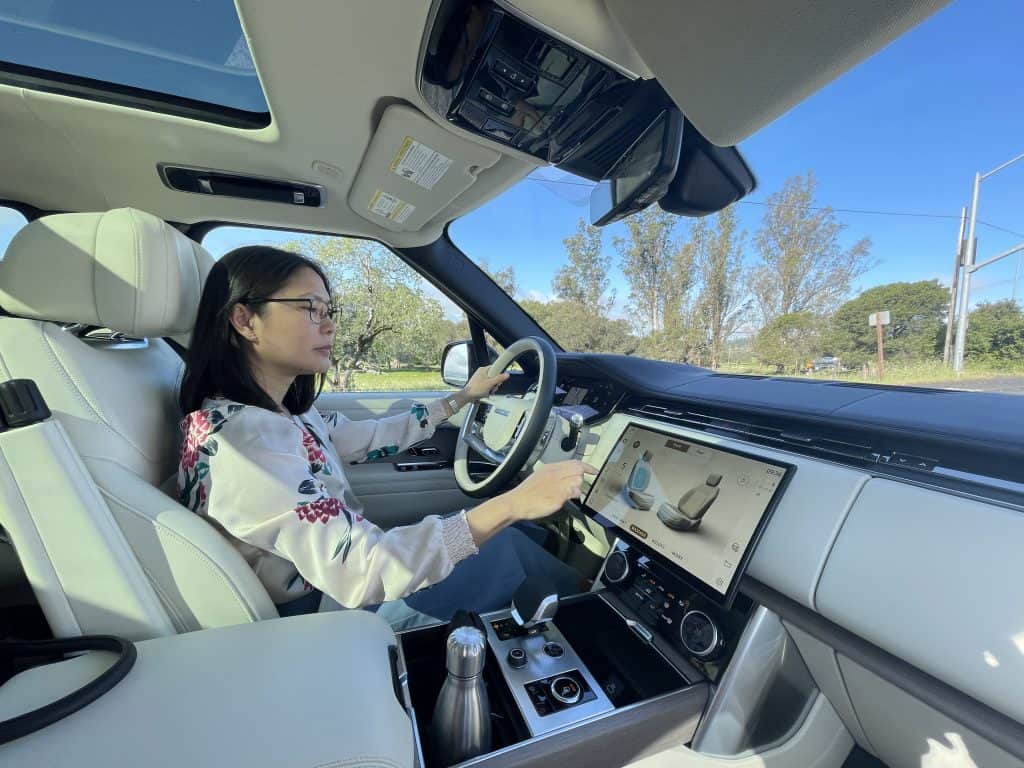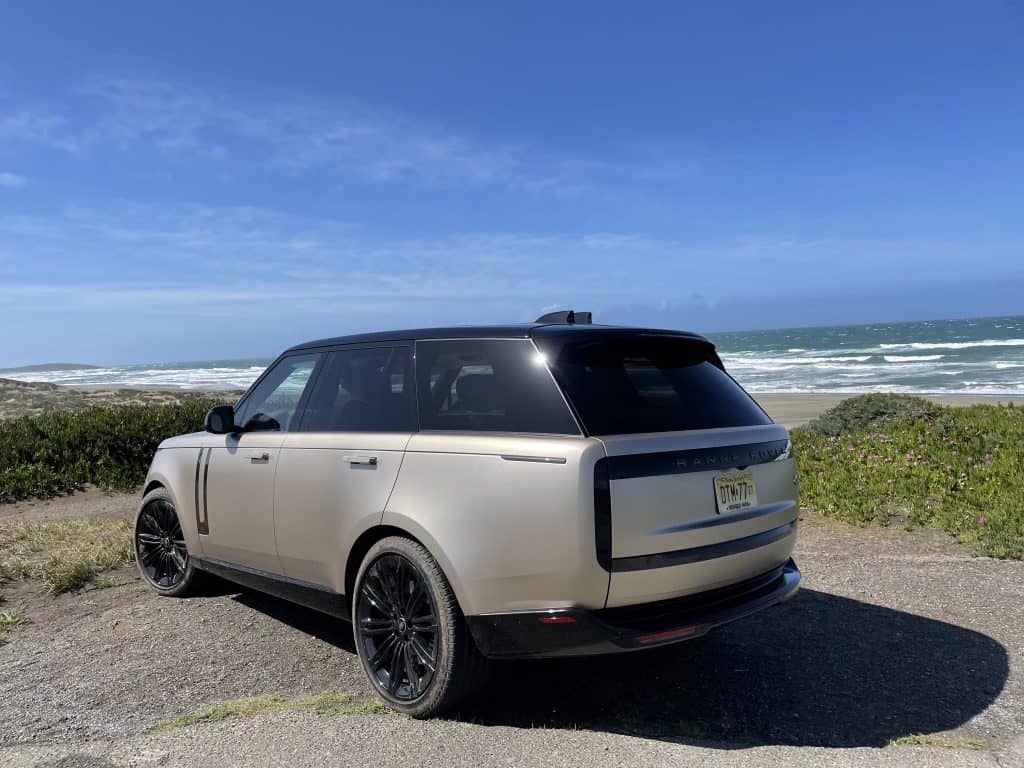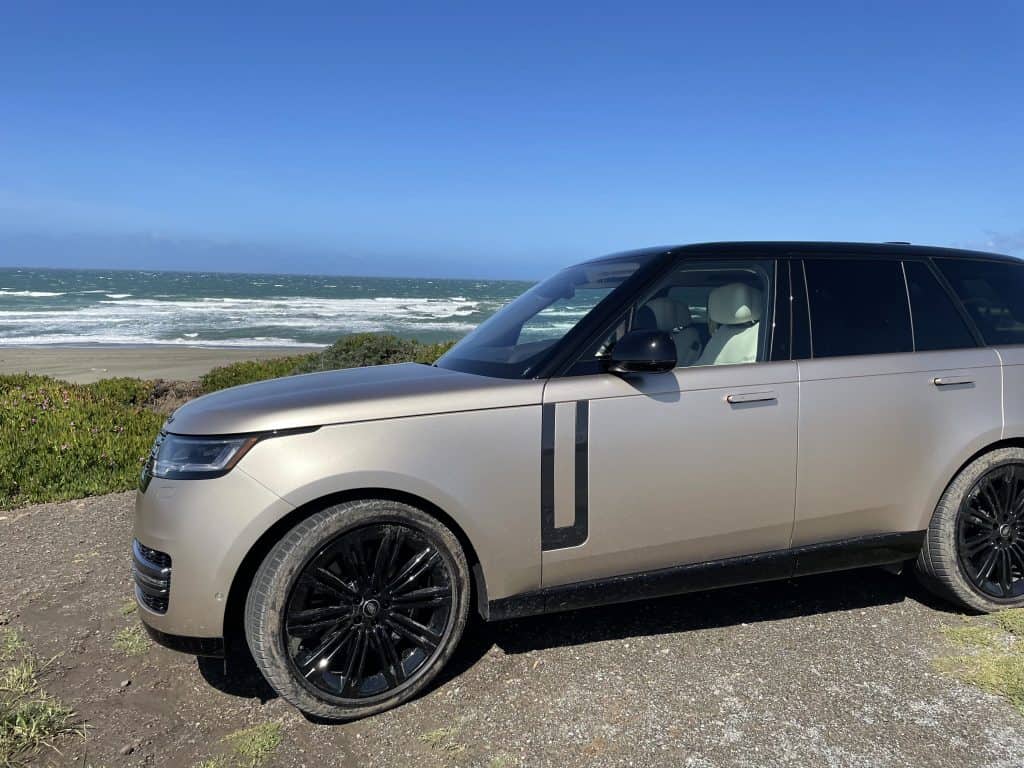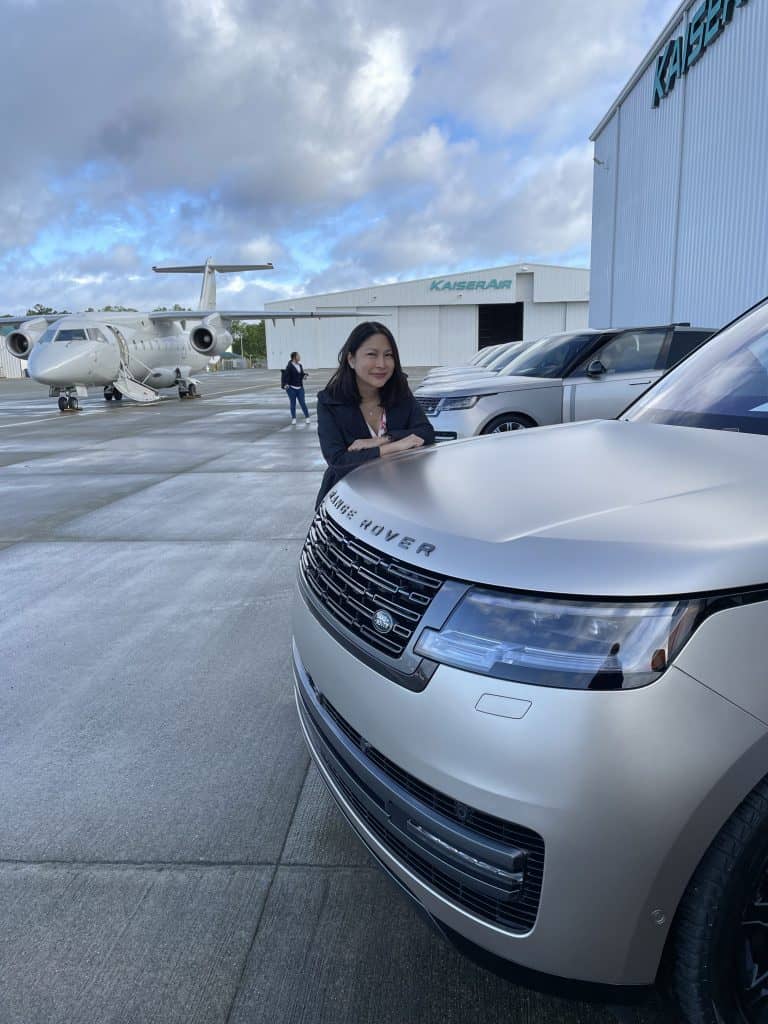“I can be the first Filipino to see the new Range Rover.” Reading the invitation to drive the new Range Rover in California made me feel very excited, and I later found out from Chris Ward (President of Coventry Motors and GM of All British Cars) that I was indeed the only Filipino invited to the drive. Or—I hesitated and thought—I can stay in Manila and stick to my regular work-home routine instead of flying halfway across the world just to drive a car.
The thing is, the Range Rover is not just any car. It is renowned as Land Rover’s ultimate luxury SUV, and the fifth-generation Range Rover promised to be the most technologically advanced and desirable thus far.
Flying to San Francisco made me nostalgic. I used to take the Manila to San Francisco flight several times when I was a student at UC Berkeley. Stepping out of the airport, I immediately felt this was not like my usual trips to Northern California. The imposing figure of the new Range Rover pulled up in front of me and a chauffeur came out to pick up my luggage. The Range Rover was strikingly sleek. Its Belgravia Green color is a unique shade contrasted by black roof and windows, with gloss black wheels. I could see people staring at me, perhaps wondering if I was some sort of VIP. My large Rimowa luggage easily fit the trunk, with plenty of room to spare.

The luxurious interiors of the Range Rover gave me the pampering I needed after a long-haul flight. The Executive Class Comfort Plus leather seats in the rear are spacious with electronically adjustable leg rests. On the armrest is an 8-inch touchscreen controller where I customized the cabin to my liking—I turned on the ambient lights, put on some music, opened the panorama glass roof to get a view of the evening sky, and turned on the hot stone massage function. I’ve sat through San Francisco rush hour traffic before, but my ride from the airport to my downtown hotel felt brief (despite the traffic) as I enjoyed the solace of the Range Rover cabin.
In the morning our group (composed of a few guests from different countries) boarded a private flight at San Francisco’s Signature Terminal. Welcoming us at Sonoma’s Private Terminal, just a few feet away from our plane, was a fleet of Range Rover vehicles.

Looking more closely, I appreciated the beauty of the new Range Rover’s modernist design philosophy. While still recognizable as a Range Rover, it is a dramatically evolved version of its predecessors. The grill looks futuristic and the LED headlights are sexy slim. The vertical taillights are hidden until lit. The whole exterior is smooth all throughout—no awkward edges, no protruding door handles. The windshield, side windows, and rear appear to be seamlessly connected. The effort to achieve this look is an engineering feat by itself, involving laser joining of the aluminum and a special ceiling for the vehicle (as I later learned from a member of Range Rover’s design team).
The interior is lush, a mix of fine veneers and exquisite detailing. The seats are perlino semi-aniline leather, softer and more durable by having the dye deeply absorbed into the leather.

The cabin is equipped with all types of accessories and tech (such as a floating 13.1-inch Privi Pro touchscreen infotainment, wireless device charger with phone signal booster, Meridien Signature Sound System) but manages to look uncluttered. One of Range Rover’s designers explained how they executed this reductive modernism—“if it’s not there, it’s not necessary, so we try to hide it away.” There is no superfluous detail.
The ultimate sensory experience came from driving the Range Rover. From the time we landed in the morning, we embarked on a whole-day drive through Sonoma’s scenic landscape passing through lush greenery, towering redwood trees, fields dotted with flowers and grazing cows, and deep blue coastlines. Again, nostalgia swept over me. Sonoma was a place that I would often go for a relaxing retreat or for a visit to wineries with my friends from UC Berkeley. But the Range Rover created an entirely new way of experiencing Sonoma.
Compared to my past road trips around Northern California, the Range Rover allowed me to fully take-in the views and appreciate the scenery. The instinctiveness of driving the Range Rover was more real than imagined. The Range Rover utilizes navigation data to monitor the road ahead and pre-emptively selects and deploys the most optimal setting. Dynamic Air Suspension with switchable volume air springs provide agility and control in varying road conditions. At night, navigation data guides the digital LED lighting to provide greater visibility while adjusting brightness to minimize the glare for incoming vehicles.

To match the changing sceneries and terrain, I drove different variants each with a unique character: Range Rover First Edition P530, Range Rover HSE D350 Mild Hybrid Electric Vehicle (MHEV), Range Rover Autobiogrpahy P400, Range Rover SE P400, and Range Rover SV P530.
The Range Rover HSE D350 MHEV has a more youthful interior with its ebony perforated ultrafabrics and Kvadrat premium textile seats. The SV (Range Rover’s first SV branding) is the height of Range Rover’s interpretation of luxury and personalization—it has a distinctive metal-plated SV grille design, ceramic SV roundel, and an SV signature suite featuring a full-length console, electrically deployable club table, electronically deployable cup holders, refrigerator, and Dartington Crystal glassware.
For the winding roads around the mountains and long highways of Sonoma, I enjoyed driving the Range Rover First Edition P530. With its powerful 4.4 liter V8 twin-turbo petrol engine, the P530 could go from zero to 100 km in 4.6 seconds. Off-road, the P530 effortlessly traversed steep hills, muddy ditches, rocky ravines, and puddles of water.
On our second day, which had a more leisurely pace and without off-roading in the itinerary, I savored driving the Range Rover Autobiography P400. The P400 runs on a 3.0-liter inline 6-cylinder ingenium petrol MHEV, but is still a force to reckon with on the road (going from zero to 100 km in only 5.9 seconds). Nonetheless, the P400 makes me feel like an environmentally responsible citizen knowing that its fuel consumption is at an amazingly efficient 9.6 liter per 100 km (go with the D350 Diesel MHEV and fuel consumption goes even lower at 7.6 liters per 100 km).
Upon arriving at Robert Young Winery, I switched to the Range Rover SV P530. I didn’t feel the need to maximize the SV’s 4.4-liter V8 twin-turbo petrol engine, but I felt that the decadence of spending my day at the winery matched the opulence of the SV’s lavish interiors. At that point I wish I had a chauffeur with me so I can sit comfortably in the back of the SV’s executive seats (ideally with a glass of wine in hand while I enjoyed the view of Sonoma’s vineyards). Once my mind had switched to vacation-mode, I longed for my family and imagined going on an out-of-town drive with them in the Range Rover SE’s 7-seater long wheelbase.
It’s interesting to find my emotions stirred by a car. Looking back, I could have stayed in Manila and saved myself a few days of jetlag. But the opportunity to drive the Range Rover in California propelled me to gain a new experience that is now among the highlights of my memories. I revisited Sonoma, a familiar place during my residency at Berkeley, but experienced it differently with the Range Rover. That is something that the Range Rover is able to do—it physically and mentally equips us to broaden our range of experience. On the road, its Intelligent All-Wheel Drive (iAWD) and all-terrain innovations provide a breadth of dynamic capability. Standard or long wheelbase; five or seven seats; leather or fabric upholstery; petrol or diesel or hybrid—the range of possibilities with the new Range Rover go beyond features and represent choices that impact lifestyle and experiences. While I would love to recreate my Range Rover experience in California, I know I can create new ones in the Philippines. I can see a range of possibilities opening wherever the Range Rover is driven.

